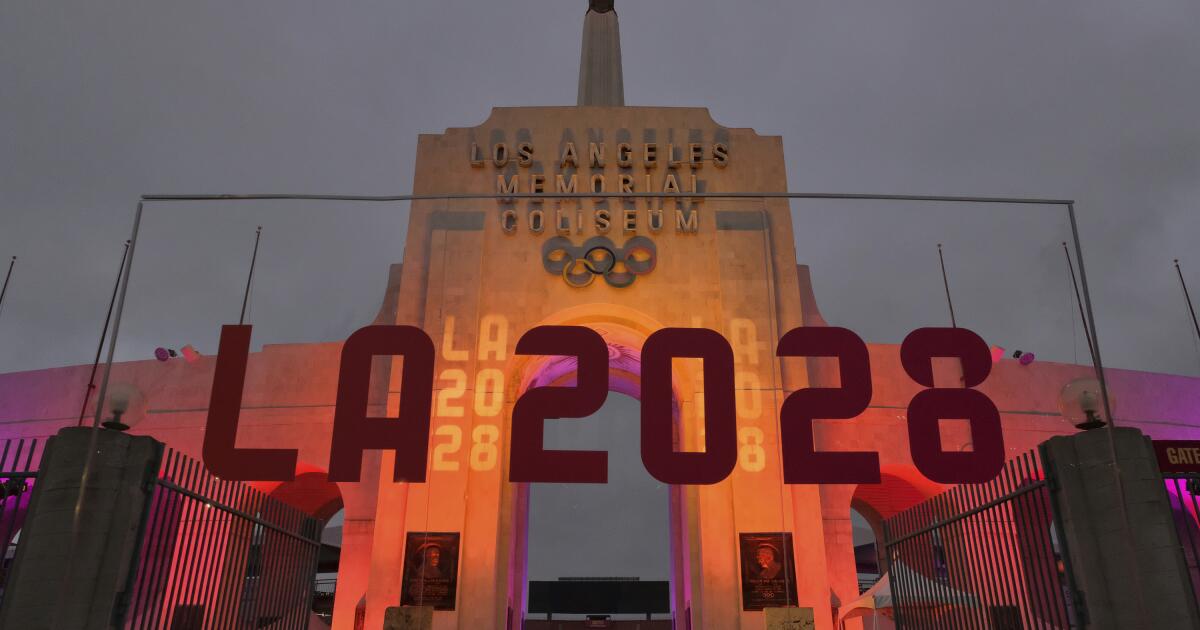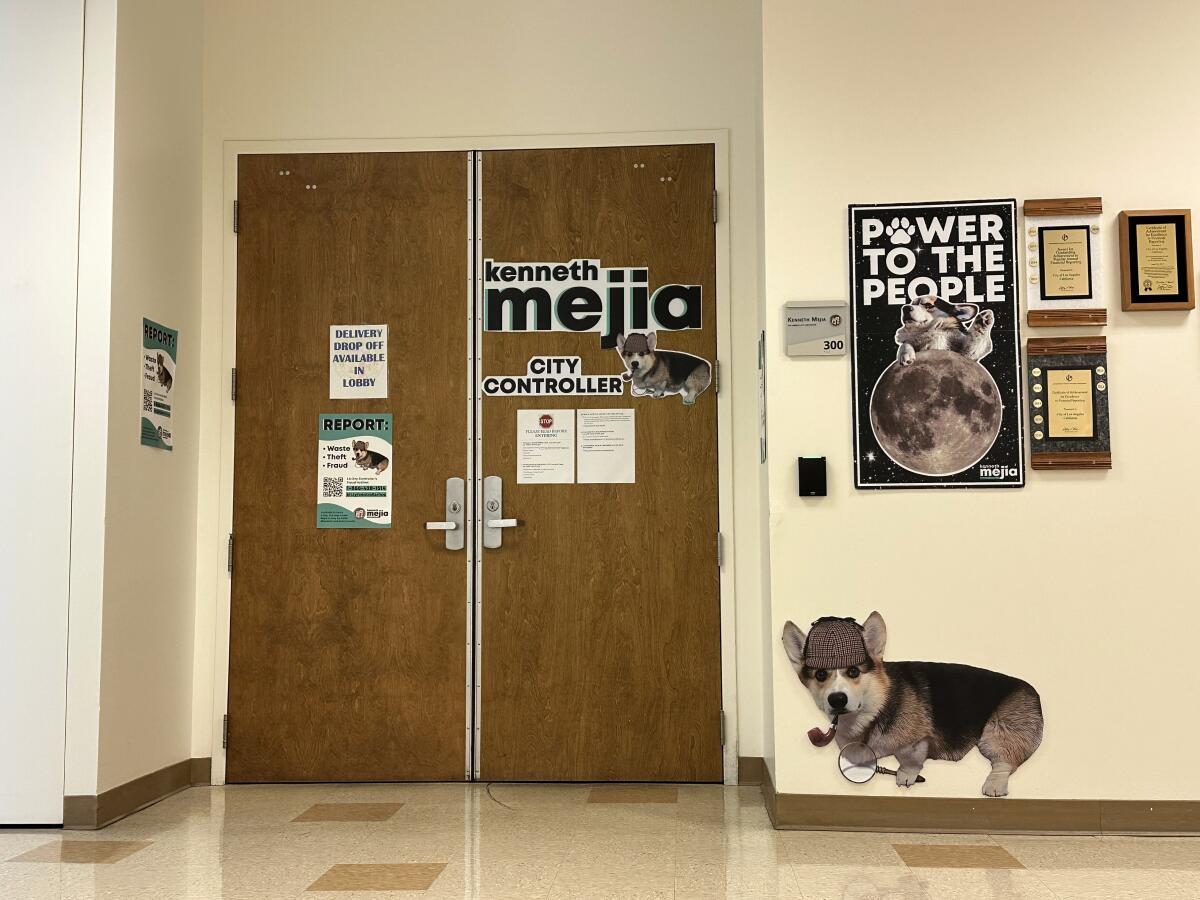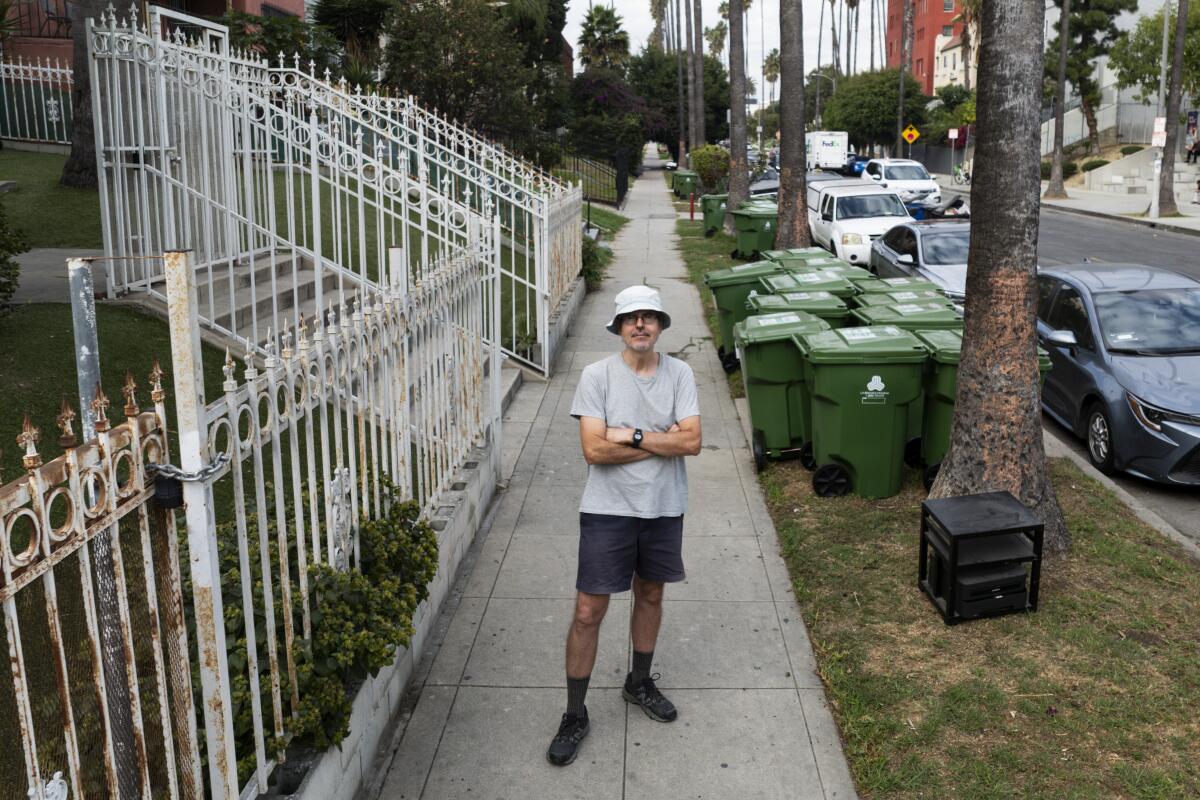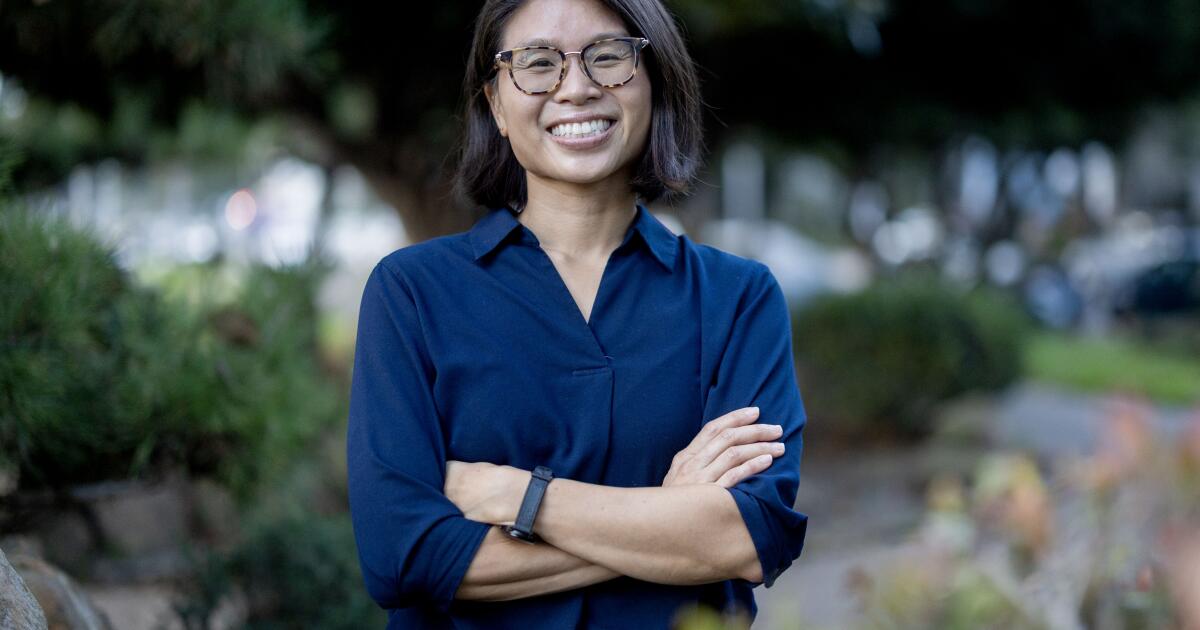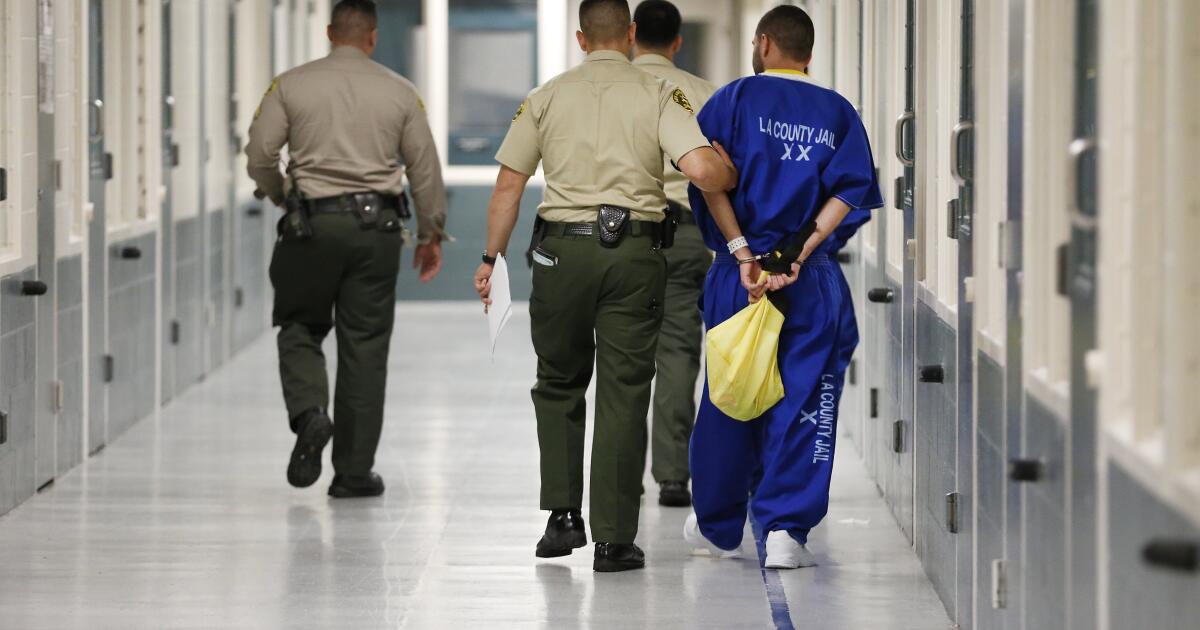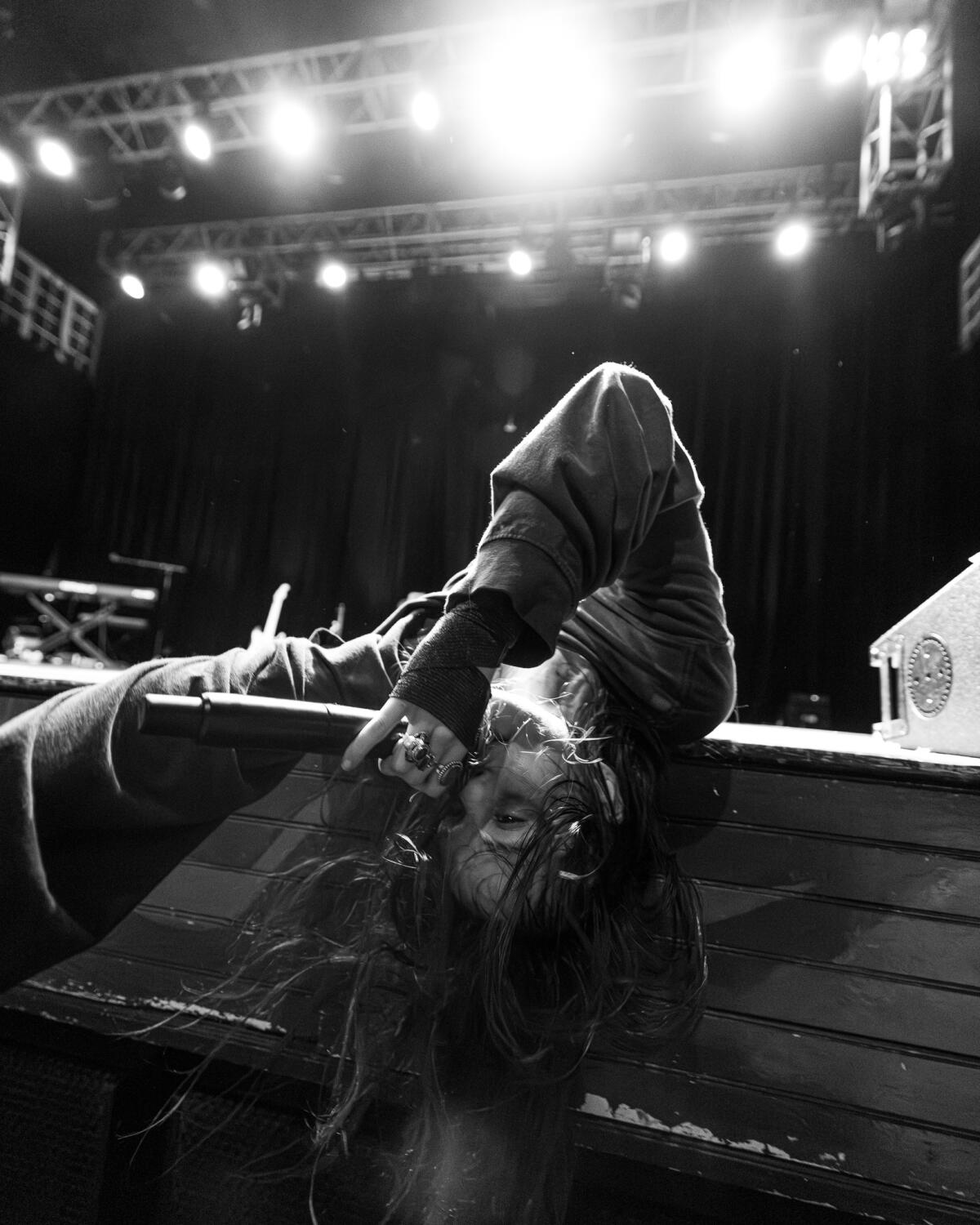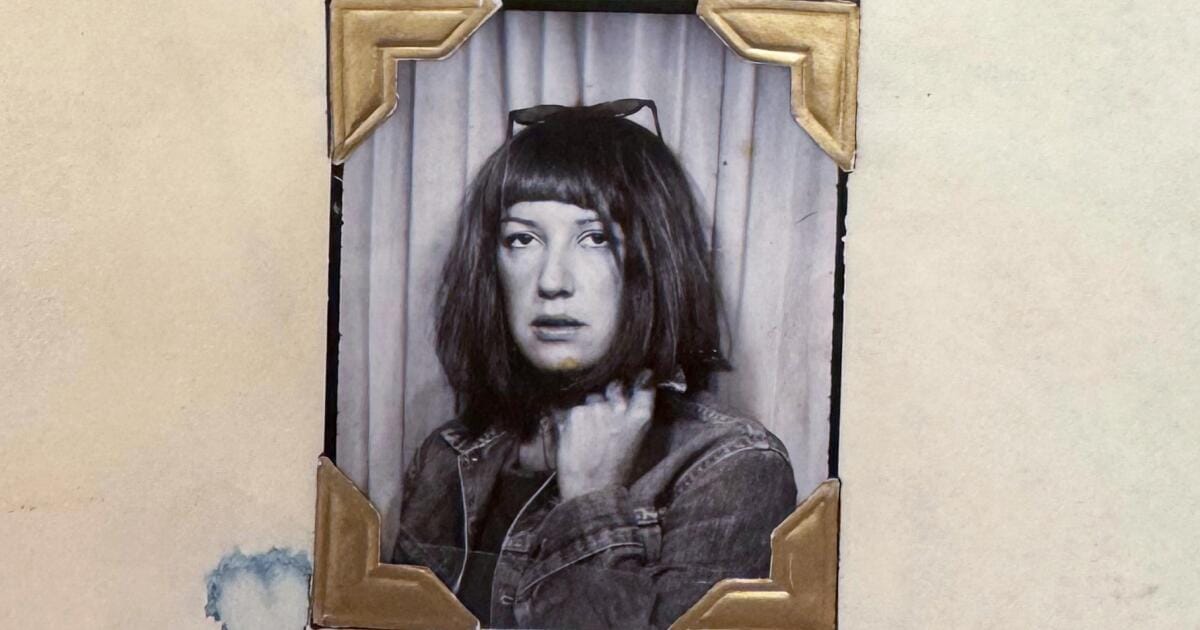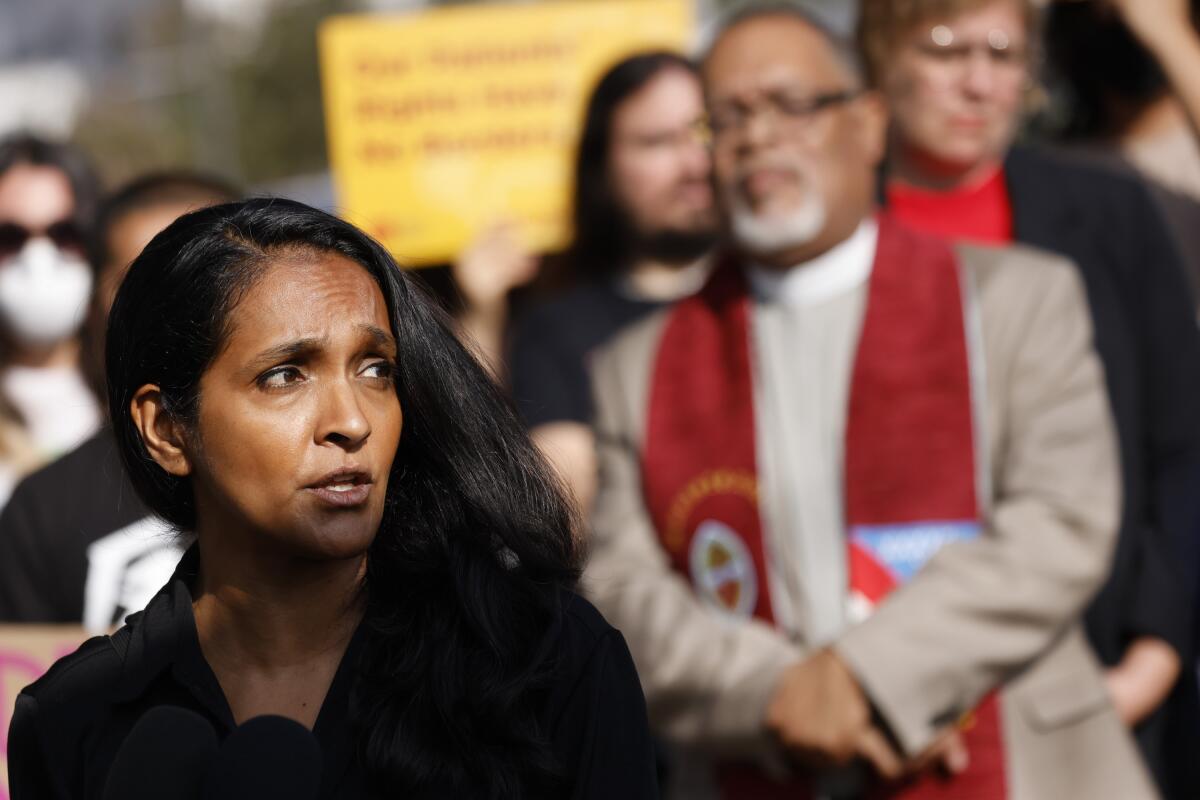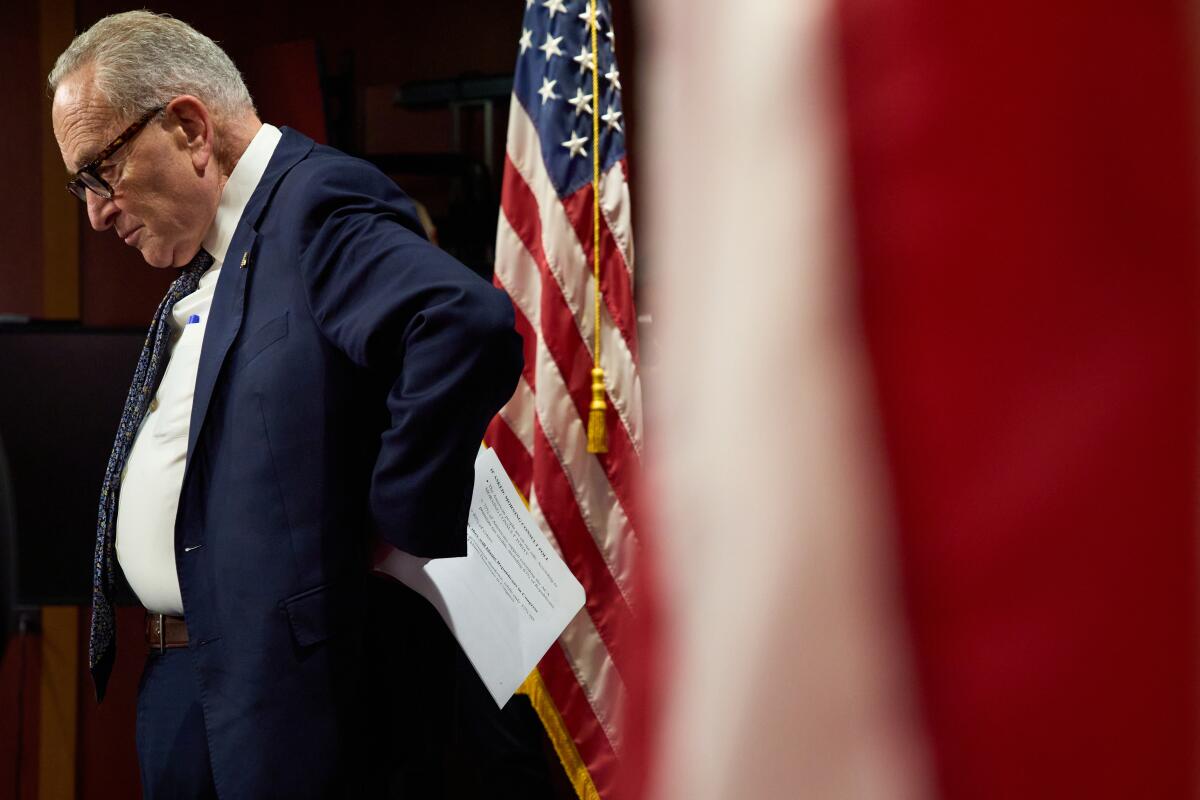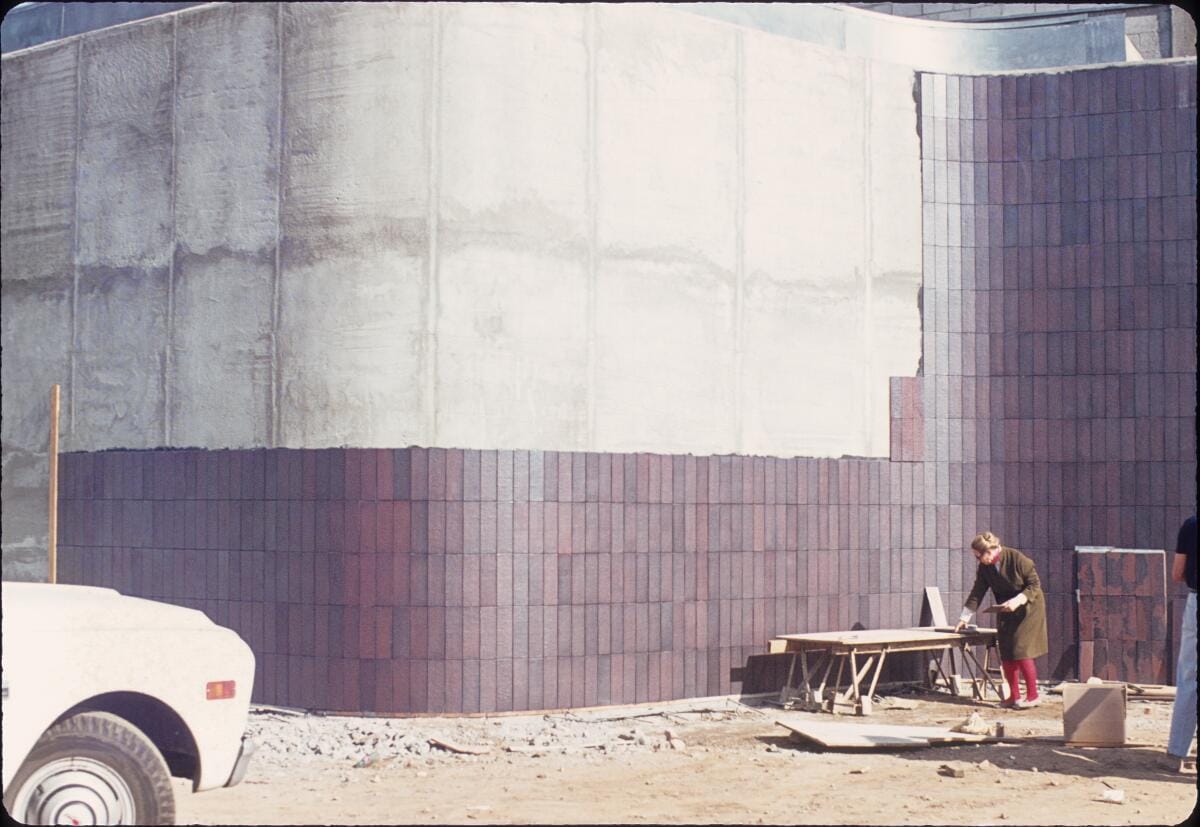Good morning, and welcome to L.A. on the Record — our City Hall newsletter. It’s Noah Goldberg, with an assist from David Zahniser and Doug Smith, giving you the latest on city and county government.
Could L.A.’s Zohran Mamdani moment be here?
It’s definitely a long shot. But Rae Huang, a 43-year-old community organizer, minister and dues-paying member of the Los Angeles chapter of the Democratic Socialists of America, is making her move, throwing her hat into the ring for mayor of Los Angeles.
The virtually unknown candidate is the deputy director of Housing Now California, a coalition that fights displacement of tenants at the state and local levels.
Huang, who is planning a campaign launch on Sunday, is shying away from comparisons to Mamdani, a democratic socialist who was elected mayor of New York City last week. She has not been endorsed by DSA-LA, though she hopes to be. Nevertheless, she sees next year’s election as a “moment for change.”
“We are in a place in our country and in our political environment where folks feel stuck and afraid,” Huang said in an interview. “They feel like nothing is going to change, and the things that are changing are making things even worse.”
You’re reading the L.A. on the Record newsletter
Huang, a Sawtelle resident, has never run for elected office. She faces an extremely uphill battle against Mayor Karen Bass, a veteran politician with close ties to the Democratic Party who has spent much of the year denouncing President Trump’s immigration crackdown in L.A.
Still, Huang could complicate Bass’ reelection bid by playing a spoiler role, pulling away left-of-center voters in a year when the incumbent is facing criticism over her handling of the Palisades fire, a struggling city budget and less-than-optimal public services.
Bass already has a challenger in former Los Angeles Unified School District Superintendent Austin Beutner, who has assailed her record in each of those areas. And it’s still not clear whether billionaire developer Rick Caruso, who lost to Bass in 2022, will jump in the race.
The larger the pool of candidates, the more work Bass will have to do in the June primary to secure an outright victory. If she falls below 50% of the vote, she would need to wage an expensive runoff campaign in the November 2026 election.
Doug Herman, a spokesperson for Bass’ campaign, said that under her leadership, “there has been unprecedented progress on the issues that matter most to Angelenos.”
“Homelessness has declined for the first time in two consecutive years, neighborhoods are safer with significant drops in crime, and the Palisades fire recovery continues far ahead of pace with the fastest recovery and rebuilding in California history,” Herman said in a statement. “In addition, there was no better defender of Los Angeles than Mayor Karen Bass when Trump’s ICE raids started and we won a court ruling to help stop the illegal raids and unconstitutional arrests.”
Sara Sadhwani, a politics professor at Pomona College, said the upcoming mayoral election differs from recent L.A. contests that were won by DSA-aligned candidates. In many of those races, DSA-backed challengers ousted incumbents who were already struggling politically, she said.
The same goes for New York City, where former Gov. Andrew Cuomo — Mamdani’s main opponent — was trying to emerge from scandal and stage a comeback, Sadhwani added.
The Democratic incumbent, Eric Adams, was so weakened by his own legal issues that he ended up running as an independent and then withdrawing from the race.
“Bass has her detractors,” Sadhwani said, “but is not in such an embattled position as Eric Adams or even Cuomo, who had stepped down from the governorship amid sexual harassment claims.”
Huang said she is in it to win — and hopes to highlight important issues for people on the left. She wants to expand public housing, make buses free for Angelenos and invest more in unarmed crisis responders.
Sound familiar? Those would pretty much be Mamdani’s talking points.
Huang said she was “hopeful” when Bass was elected. Now, she lobs plenty of criticism at Bass.
She thinks the mayor’s Inside Safe program is allowing too many people to slip back into homelessness. She believes Bass should explicitly support the Venice Dell affordable housing project. And she doesn’t feel the mayor did enough to curb police violence during the summer’s chaotic protests over federal immigration raids.
Huang is not the first to run from Bass’ left. In 2022, late-arriving mayoral hopeful Gina Viola won nearly 7% of the vote, scooping up more than 44,000 votes in the primary after positioning herself as the self-proclaimed “infamous defund-the-police candidate.”
Viola said she is glad to see Huang get into the race, and with much more time to campaign. Viola ran in 2022 with just three and a half months left before the primary. Huang has nearly seven months.
“What she needs to do is [win over] those voters that are so terribly disenfranchised that they don’t have anything to vote for,” Viola said.
Part of getting those potential voters out to the polls is having a strong ground game, knocking on doors and raising money. An endorsement from the local DSA chapter could help Huang get her name out to more Angelenos, Sadhwani said.
DSA members have petitioned to endorse Huang. She needs to receive 50 signatures, which would trigger a vote of chapter members, with 60% required to capture the endorsement.
“It’s certainly exciting to see a left challenger to a status-quo Democrat. That always pushes the conversation in a good direction,” said Claire Palmer, an organizer with DSA-LA.
There has been “enthusiasm” among members about Huang, Palmer said.
As for the DSA-backed members of the City Council?
“I haven’t sat down with them yet,” Huang said.
While four DSA-backed L.A. City Council members celebrated Mamdani’s win with a party at a Highland Park bar on election night, it’s not clear that they have any interest in getting behind a candidate other than Bass.
“Karen Bass is the most progressive mayor we’ve ever had in L.A.,” Councilmember Nithya Raman told The Times at the party.
Bass “has been doing a good job at least in handling this crisis,” Councilmember Eunisses Hernandez said in June, referring to Bass’ handling of the federal immigration raids.
Councilmember Hugo Soto-Martínez has already endorsed Bass.
State of play
— THE RENT IS TOO DAMN CAPPED: The City Council voted Wednesday to lower the annual cap on rent increases for rent-stabilized apartments to 4%. Many landlords and developers opposed the move, saying it would eat into their bottom line and drive away investment. Council members argued that the changes are needed to keep Angelenos from falling into homelessness.
— WILDFIRE PROBE: Los Angeles County has opened an investigation into State Farm General’s treatment of January wildfire victims following complaints that claims were delayed, denied and underpaid. The state’s largest home insurer received notice of the probe in a letter demanding records and data showing whether the company violated the state’s Unfair Competition Law.
— MISSING INFO: At least one official in the Los Angeles Fire Department was aware of concerns that its firefighters were ordered to stop mop-up operations for a Jan. 1 brush fire that later reignited into the massive Palisades fire. Yet the department’s 70-page after-action report on the Palisades fire didn’t include that information — or any detailed examination of the reignition, The Times reported this week.
— FAREWELL TO A WATCHDOG: One of L.A. County’s most prominent citizen watchdogs is dead at 62. Eric Preven, a resident of Studio City, advocated for increased public access to city and county meetings, filed countless public information requests and regularly offered his views on CityWatch. “It wasn’t just like [he was] shooting from the hip,” said Supervisor Kathryn Barger. “He would do his research.”
— MEMORIES OF MARQUEZ: Environmentalists are mourning the death of Wilmington clean air advocate Jesse Marquez, who battled the Port of Los Angeles for years over emissions from trucks, trains and ships. Marquez, 74, died Nov. 3 from health complications that developed after he was struck by a vehicle while in a crosswalk in January.
— A NEW ROADBLOCK: The proposal from Frank McCourt for a gondola between Union Station and Dodger Stadium faced yet another setback this week, with the City Council urging Metro to kill the project. “This resolution tells Metro that the city of Los Angeles refuses to be bought by shiny renderings and empty promises,” said Hernandez, who represents Chinatown and the stadium area.
— PROTEST POWERS: The council’s Public Safety Committee endorsed legislation this week that would bar the LAPD from using crowd control weapons against peaceful protesters and journalists. The proposal, which now heads to the full council, would prohibit the department from using “kinetic energy projectiles” or “chemical agents” unless officers are threatened with physical violence.
— POLICING THE POLICE: The LAPD took more than a year to begin fully disclosing domestic abuse allegations against its officers, as required by a state law passed in 2021. The revelation came out during a recent hearing regarding an officer who was fired after being accused of time card fraud and physically assaulting her former romantic partner, a fellow cop.
— CHIEF IN CHARGE: The council voted Friday to make Deputy Chief Jaime Moore the city’s newest fire chief. Moore, a 30-year department veteran, said one of his top priorities will be improving morale in a department that has faced heavy criticism for its handling of the Palisades fire. He also plans to seek an outside investigation into missteps by fire officials in the days leading up to that disaster.
— GRILLING GIBSON DUNN: U.S. District Court Judge David O. Carter pressed attorneys from Gibson Dunn this week on the fees they’ve been charging the city in the landmark LA Alliance homelessness case. At one point, the firm had 15 lawyers billing the city $1,295 per hour, regardless of their titles or experience.
Carter also voiced his anger over reports that a South L.A. homeless facility had only 44 beds, not the 88 spelled out in a contract awarded to a nonprofit group. The judge set a hearing for Wednesday on whether to hold the city in contempt over what he described as delaying tactics in complying with an order he issued earlier this year.
QUICK HITS
- Where is Inside Safe? The mayor’s signature initiative to combat homelessness did not launch any new operations this week. The program did move about a dozen people indoors from Skid Row, according to Bass’ team.
- On the docket next week: The council heads out on recess next week, with members taking part in the National League of Cities conference in Salt Lake City. Meetings are also canceled the following week for the Thanksgiving holiday. They’ll be back Dec. 2.
Stay in touch
That’s it for this week! Send your questions, comments and gossip to [email protected]. Did a friend forward you this email? Sign up here to get it in your inbox every Saturday morning.
